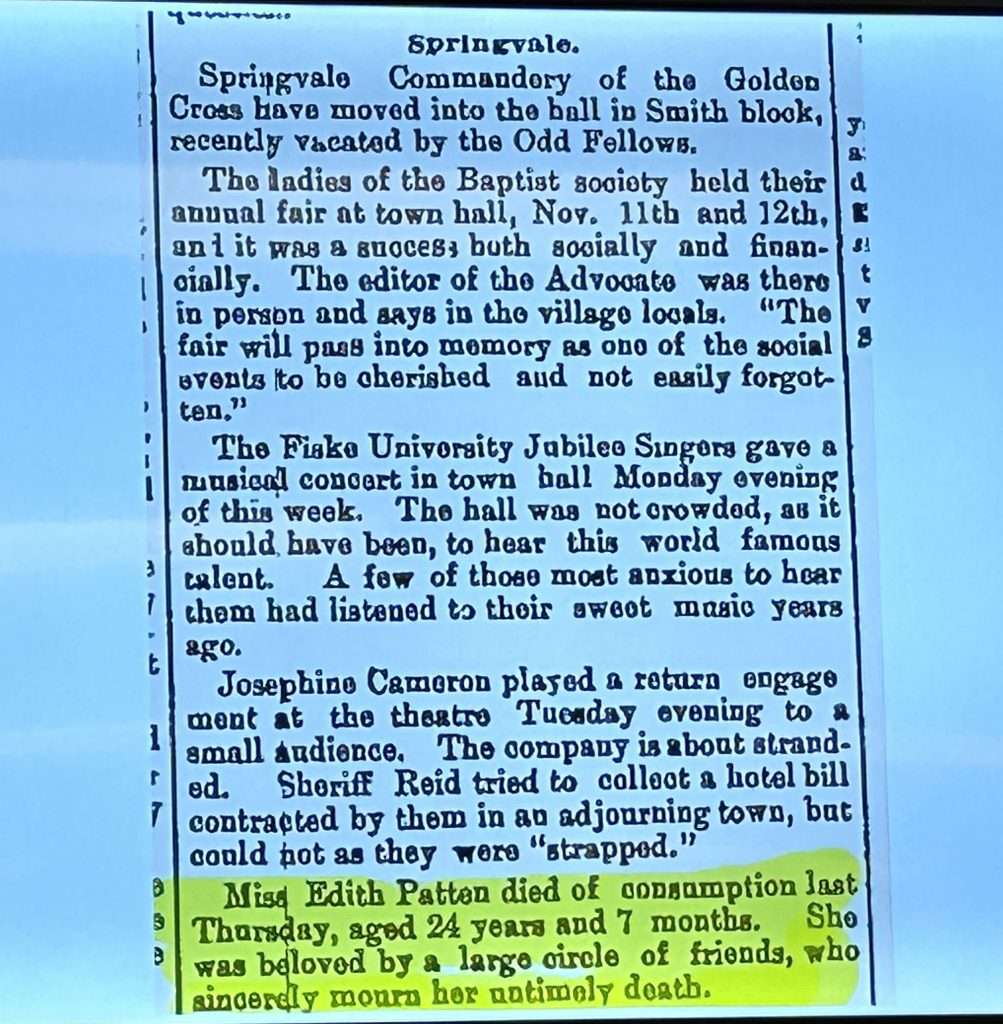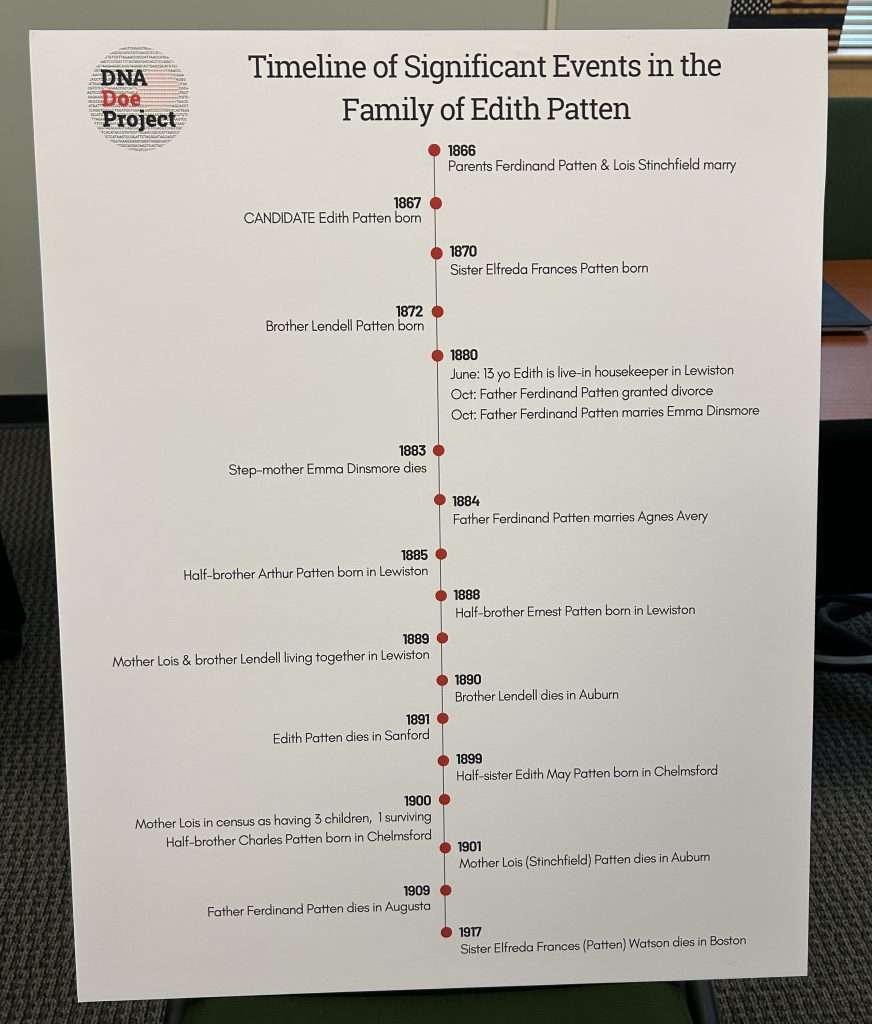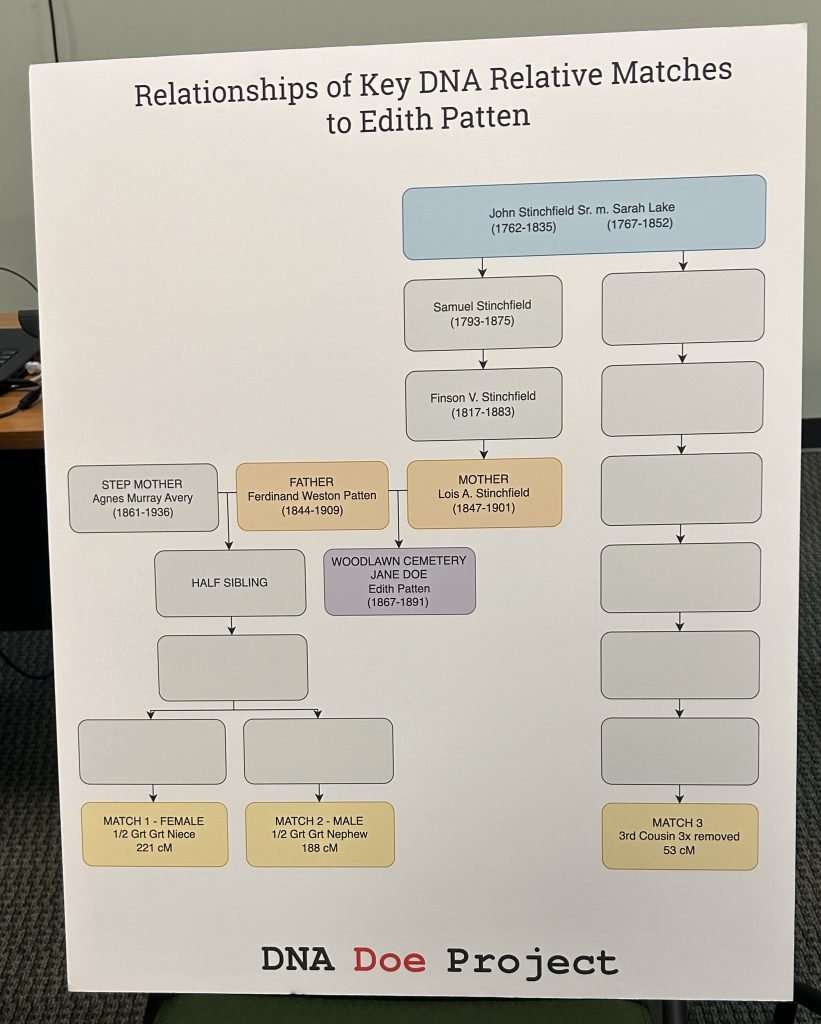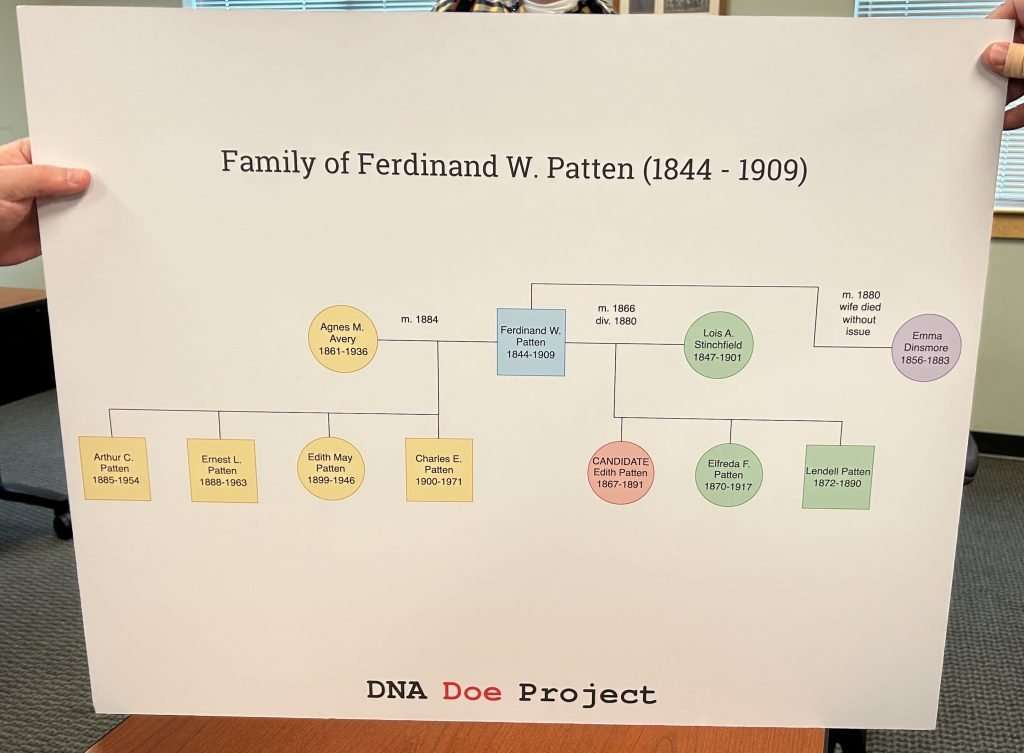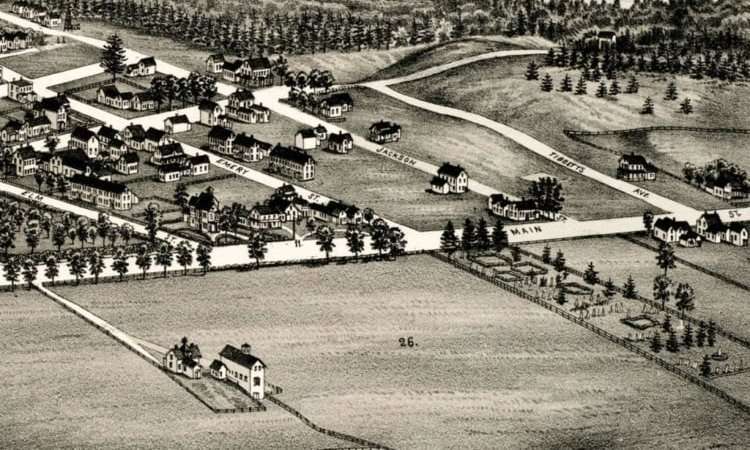Mystery Remains Identified After Six Year Search
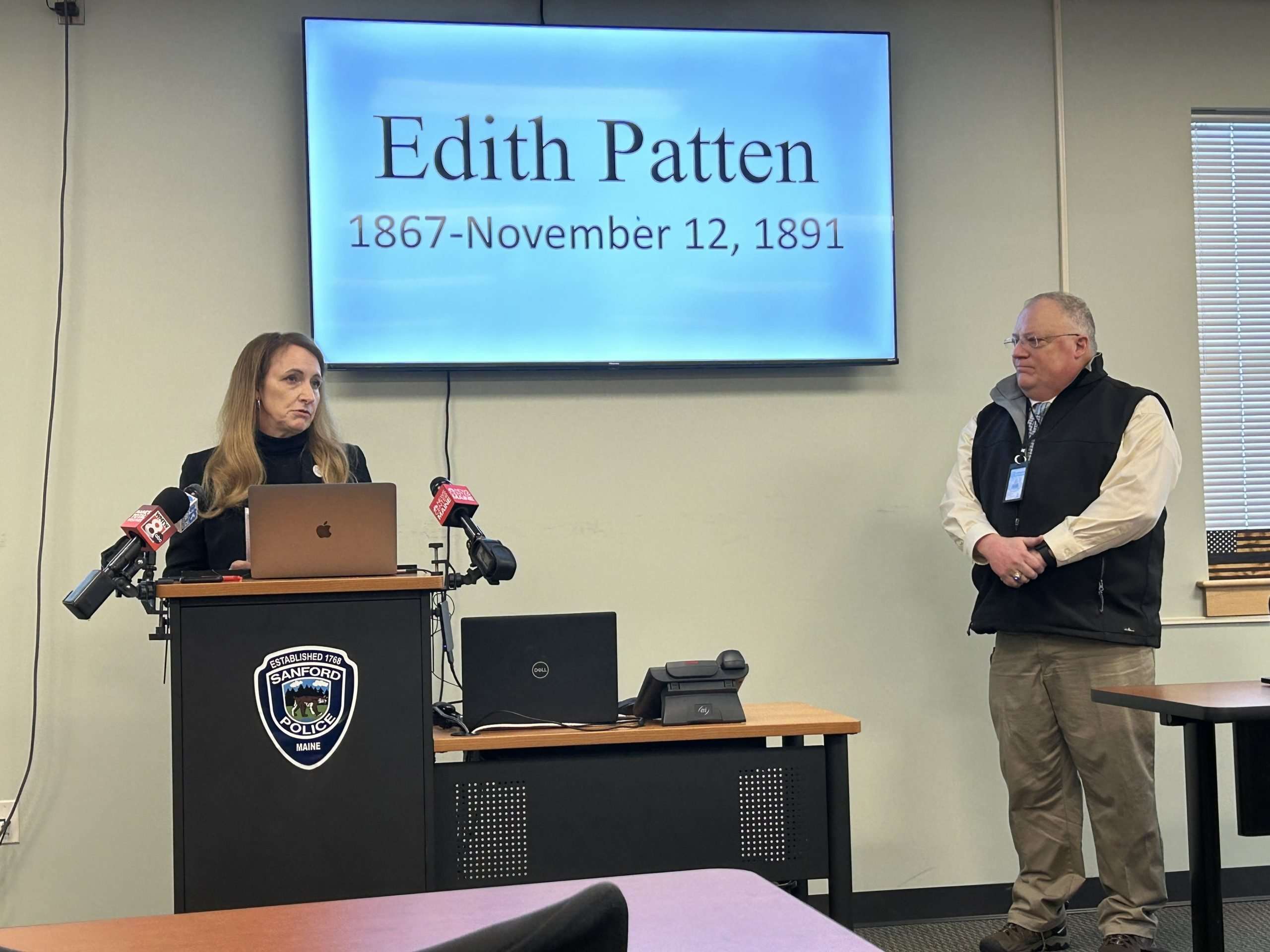
The skeletal remains that were unearthed during the excavation for Cumberland Farms in 2017 have finally been identified, thanks to help from the DNA Doe Project (DDP), a nonprofit organization that works to restore names to unidentified remains. The Sanford Police Department hosted a press conference on Wednesday, March 1, 2023, to announce the remains have been identified as those of Edith Patten, who was born in 1867 and died November 12, 1891.
SPD Historian and Sanford High School history teacher Paul Auger gave some background on the location. After her passing, Edith was buried in Woodlawn Cemetery. Emerson School, which was originally Sanford’s High School, was built right next to it. After Willard School was built in the 1920s, it became the High School and Emerson became an elementary school. A few years later, the Woodlawn graves were moved to Oakdale Cemetery, so that Emerson could have room for a playground. It appears that at this time, Edith’s grave was overlooked.
When excavation for Cumberland Farms began, her remains were discovered. Major Matt Gagné of the SPD said it was initially treated as a potential crime scene until it was determined that it was an old grave location. Along with bone fragments, coffin hardware was also unearthed. This was not the first time human remains have been left behind in Sanford – in 1980, excavation for the elevator shaft at the Town Hall turned up a leg bone from an old cemetery.
Mr. Auger said the State Medical Examiner’s office had little interest in identifying Edith’s remains, which due to her small size, were initially thought to belong to a child. With the help of Major Gagné, he uploaded her DNA profile to GEDmatch, a genetic genealogy website that is used by law enforcement. He found some distant relatives, but couldn’t get anything near enough for identification. Then he reached out to the DDP, who agreed to take the case. Mr. Auger said that without the hard work by their team of talented researches, Edith would never have been identified.
Jennifer Randolph of the DDP described her agency’s mission as a simple, humanitarian one – to restore names to John Does and Jane Does. “We believe everyone deserves the dignity of being remembered by name,” she said. DDP more typically works with law enforcement to identify crime victims, and she noted that there were more people in attendance at the Sanford press conference than there were at a 2021 press conference identifying a victim of Chicago serial killer John Wayne Gacy. Among DDP’s current projects is work to identify remains from mass graves believed to be victims of the 1921 Tulsa Race Massacre. Ms. Randolph said that Edith’s identification is “a tribute to how caring people of Sanford are.”
So who was Edith Patten? She was likely born in Fairfield, Maine, the daughter of Ferdinand Weston Patten and Lois Stinchfield Patten, where she was enumerated as a toddler in the 1870 census. After Edith, the Pattens had two more children. By the age of 13, Edith was working as a live-in housekeeper in Lewiston. That same year, Ferdinand and Lois divorced, with Ferdinand alleging adultery and abandonment. He remarried quickly, to a woman who died within a few years, and then married a third time, and had four more children with this third wife. It was the descendants of these half-siblings that were eventually matched to Edith, enabling her identification. It appears that neither Edith nor her full siblings ever married or had children. An additional confirming match came through a 3rd cousin on her mother’s side.
Following her death, this notice was printed in the Springvale column of the Biddeford Daily Journal for November 25, 1891: “Miss Edith Patten died of consumption last Thursday, aged 24 years and 7 months. She was beloved by a large circle of friends, who sincerely mourn her untimely death.” Consumption was another name for tuberculosis, a very common cause of death in the 19th century. It is unknown how Edith ended up in Springvale. She may have been working in a shoe factory or mill, where there were many jobs available for young women.
Mr. Auger thanked several additional people who provided assistance, including City Manager Steve Buck, Assistant Public Works Director Pete Smith, and Richard Cote of Shaw’s Hardware, who fabricated a sifter used in the recovery of the remains. He also thanked Tom Cote, who was Mayor at the time, and Mayors and City Councilors since then.
As to what will happen to Edith now, Mr. Auger said the decision would be up to the City Council. She could be reburied in Oakdale Cemetery, which is where she would have been if her remains had not been missed back in the 1930s, or should could be buried in Augusta with the rest of her family.
